Your cart is currently empty!
Discover Hawaii Volcanoes National Park: Your Complete Guide to an Unforgettable Adventure

Hawaii Volcanoes National Park is where nature’s raw power meets serene beauty, creating a destination unlike any other on Earth. Spanning over 300,000 acres on Hawaii’s Big Island, this iconic park is home to two of the world’s most renowned volcanoes—Kīlauea, one of the most active, and Mauna Loa, the largest. Whether you’re drawn by fiery lava flows, lush rainforests, or the chance to connect with Hawaii’s cultural heritage, the park offers endless opportunities to explore, learn, and marvel.
The Unique Beauty of Hawaii Volcanoes National Park
Nestled in the heart of the Big Island, Hawaii Volcanoes National Park is a geological wonder. Established in 1916, the park’s volcanic landscape tells the story of Earth’s creation, from fiery eruptions to life’s resilience in the face of constant change. It’s no surprise the park holds a UNESCO World Heritage Site designation, captivating visitors with its contrasts of fire, rock, and vibrant greenery.
More than a geological marvel, the park is deeply tied to Hawaiian mythology. It is believed to be the home of Pele, the goddess of fire, adding an air of sacred mystery to its breathtaking vistas.
Top Attractions in Hawaii Volcanoes National Park
Hawaii Volcanoes National Park offers a rich variety of attractions that showcase the island’s volcanic majesty, cultural heritage, and natural beauty. Here’s an in-depth look at the must-see landmarks and features of the park:
1. Kīlauea Volcano
Why It’s Special:
Kīlauea is one of the world’s most active volcanoes, and its continuous eruptions over the years have made it a global attraction. The volcano has dramatically shaped the Big Island’s landscape, adding acres of new land with its flowing lava. It’s a living example of how volcanic activity creates and transforms the Earth.
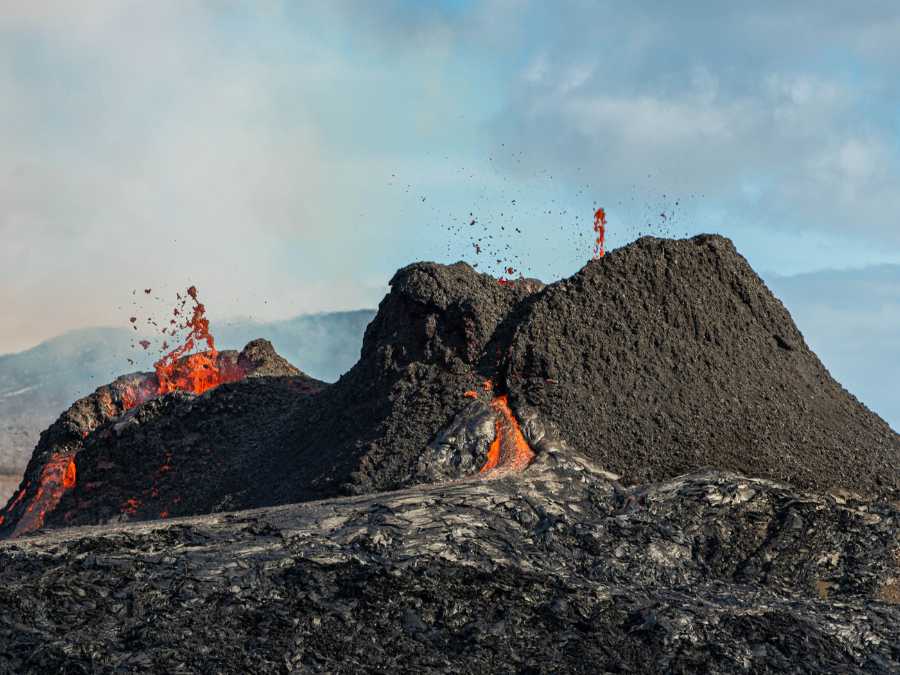
What to See and Do:
- Visit the Kīlauea Visitor Center to learn about the volcano’s history, eruptions, and cultural importance.
- Depending on volcanic activity, you may be able to see glowing lava at night from designated viewing areas. Always check safety updates from the park before planning your visit.
- Hike the Kīlauea Iki Trail, a 4-mile loop that takes you across a former lava lake, now hardened and surreal in its beauty.
2. Mauna Loa Volcano
Why It’s Special:
Mauna Loa is the largest volcano in the world by volume, making it an awe-inspiring feature of the park. Its sheer size is mind-boggling, covering nearly half the Big Island and reaching heights of 13,681 feet above sea level (33,500 feet from the ocean floor).
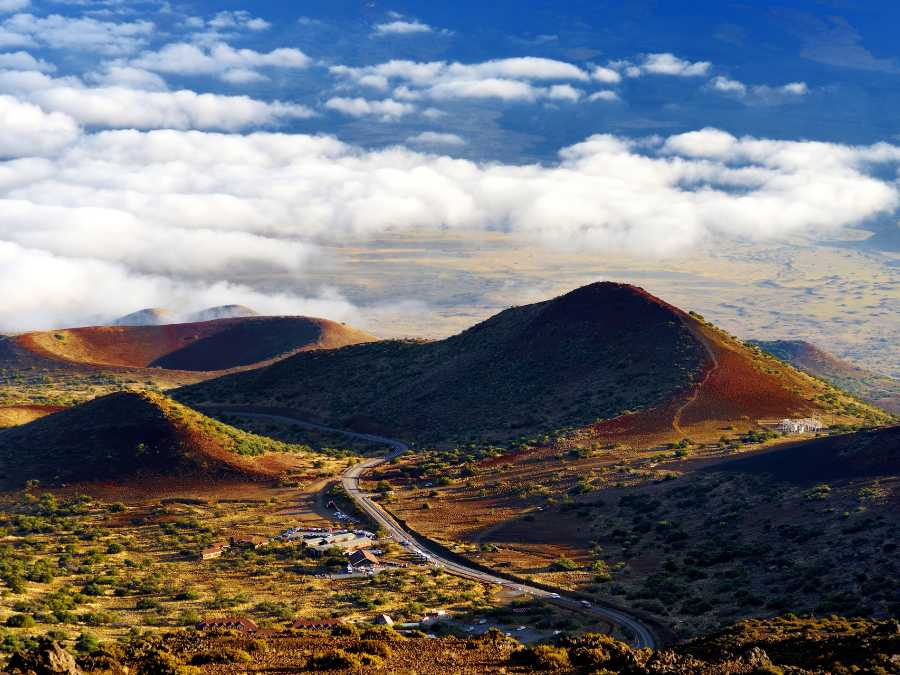
What to See and Do:
- Trek the Mauna Loa Summit Trail, an ambitious hike that rewards travelers with stunning views from the top.
- Explore the Mauna Loa Observatory Trail, a shorter and more accessible route offering insights into the volcano’s impact on weather and geology.
3. Crater Rim Drive
Why It’s Special:
This scenic 11-mile drive encircles the Kīlauea Caldera and provides a convenient way to experience several of the park’s highlights in one trip. The road offers stunning vistas, active steam vents, and opportunities to learn about the area’s history and geology.
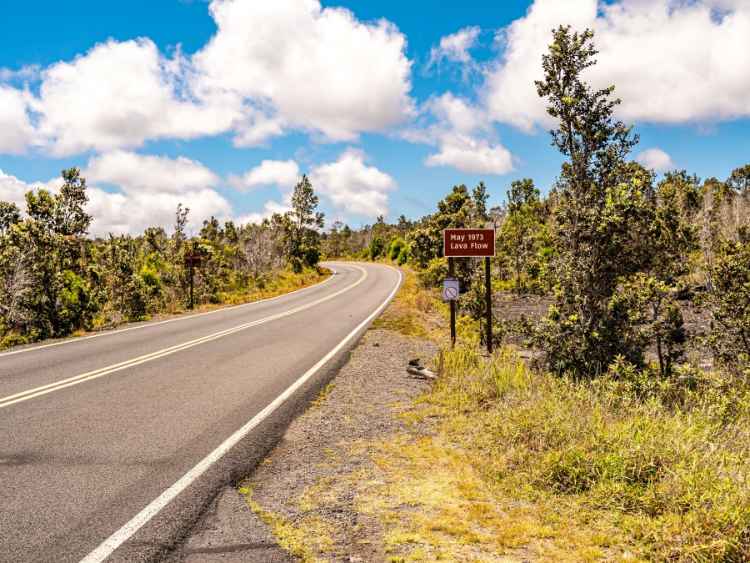
What to See and Do:
- Stop at Steam Vents, where you can feel the heat rising from the ground as water seeps into the volcanic rock.
- Visit the Devastation Trail, an easy hike through a landscape scarred by the 1959 eruption of Kīlauea Iki.
- Explore the area around Halemaʻumaʻu Crater, where you can witness evidence of recent volcanic activity and its dynamic effects on the landscape.
4. Thurston Lava Tube (Nāhuku)
Why It’s Special:
The Thurston Lava Tube is a natural tunnel formed by flowing lava over 500 years ago. Walking through this underground passage feels like stepping back in time to witness the forces that shaped the island.
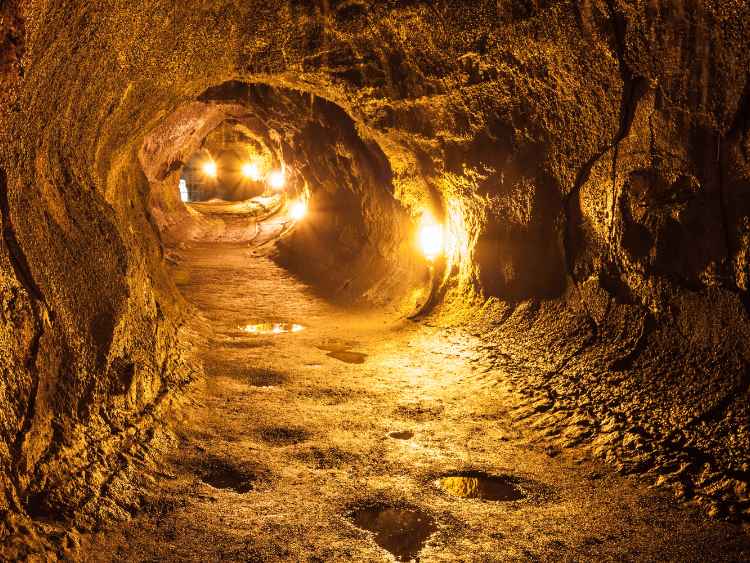
What to See and Do:
- Stroll the easy, 0.4-mile trail through the lush rainforest to the lava tube entrance.
- Walk inside the well-lit tube and marvel at its smooth walls, which were sculpted by molten lava.
- Learn about how lava tubes form and their role in volcanic activity.
5. Chain of Craters Road
Why It’s Special:
This 19-mile scenic drive descends over 4,000 feet from the summit of Kīlauea to the coast, offering breathtaking views of past lava flows, volcanic craters, and the dramatic meeting of lava and ocean.
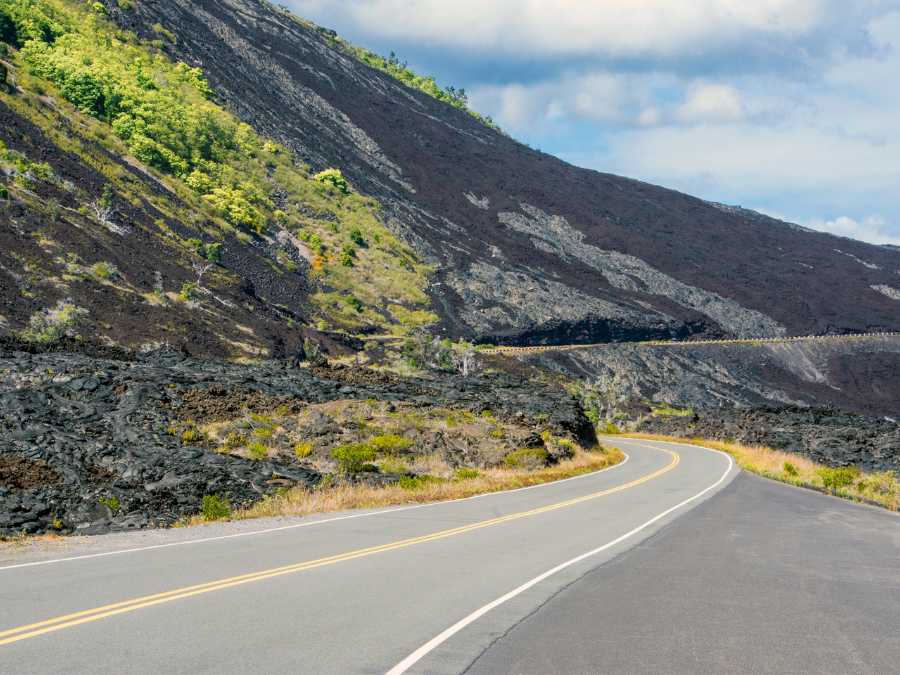
What to See and Do:
- Stop at the Puʻu Loa Petroglyphs, an archaeological site where you can see ancient Hawaiian rock carvings.
- Witness the remnants of lava flows that have crossed the road, showcasing nature’s raw power.
- At the end of the road, visit the Holei Sea Arch, a stunning natural formation carved by waves.
6. Halemaʻumaʻu Crater
Why It’s Special:
This crater holds deep cultural significance as the home of Pele, the Hawaiian goddess of fire and volcanoes. It’s also a dynamic geological site, where frequent eruptions have created a constantly changing landscape.
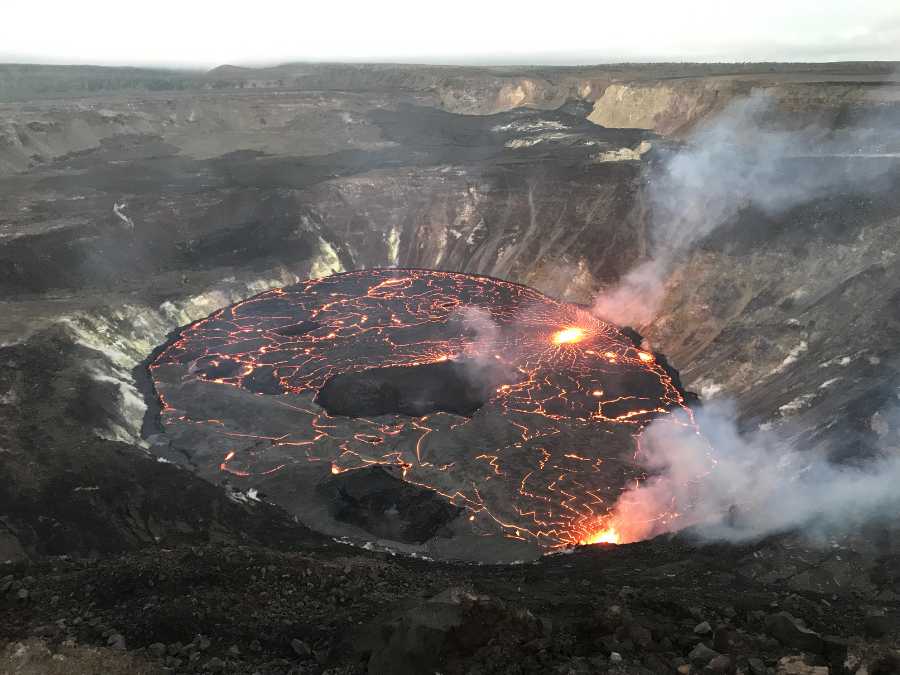
What to See and Do:
- View the crater from safe lookout points to witness its evolving lava lake and sulfur steam vents.
- Learn about the crater’s cultural importance through exhibits at nearby visitor centers.
- Take in the dramatic sights, particularly at sunrise or sunset, when the glowing lava creates an unforgettable spectacle.
Best Activities to Experience in the Park
1. Hiking Trails
For hikers, Hawaii Volcanoes National Park is paradise. Short trails like the Kīlauea Iki Trail take you across a once-molten lava lake, while longer routes, such as the Mauna Loa Summit Trail, challenge even seasoned adventurers.
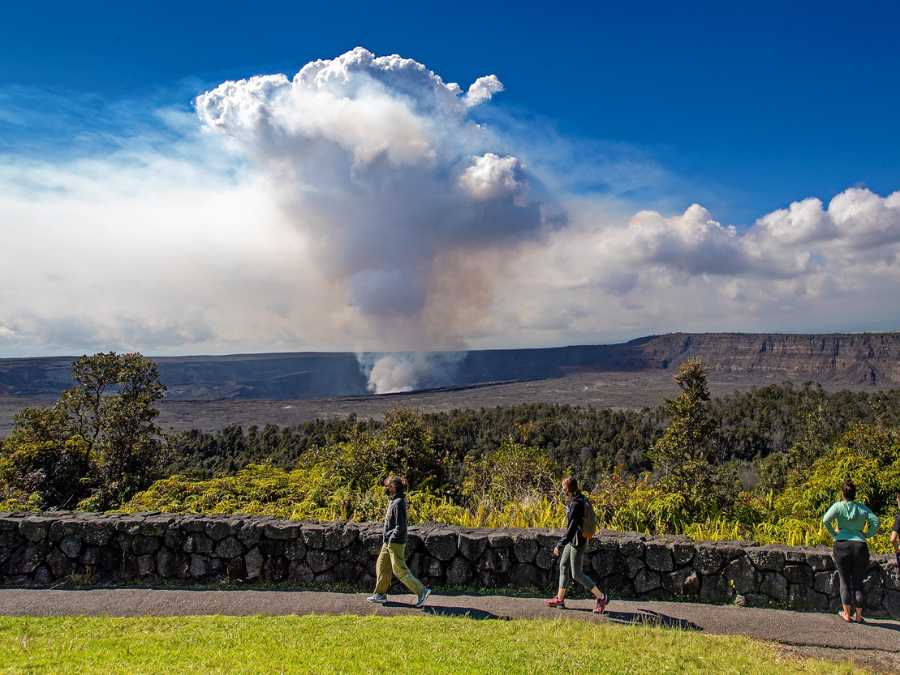
2. Ranger-Led Programs
Gain deeper insights into the park’s geology, ecology, and cultural history with ranger-led tours. Programs cover everything from volcanic activity to native Hawaiian traditions.
3. Stargazing
When the sun sets, the park transforms into a stargazer’s dream. With minimal light pollution, you can witness the Milky Way stretching across the Hawaiian night sky.
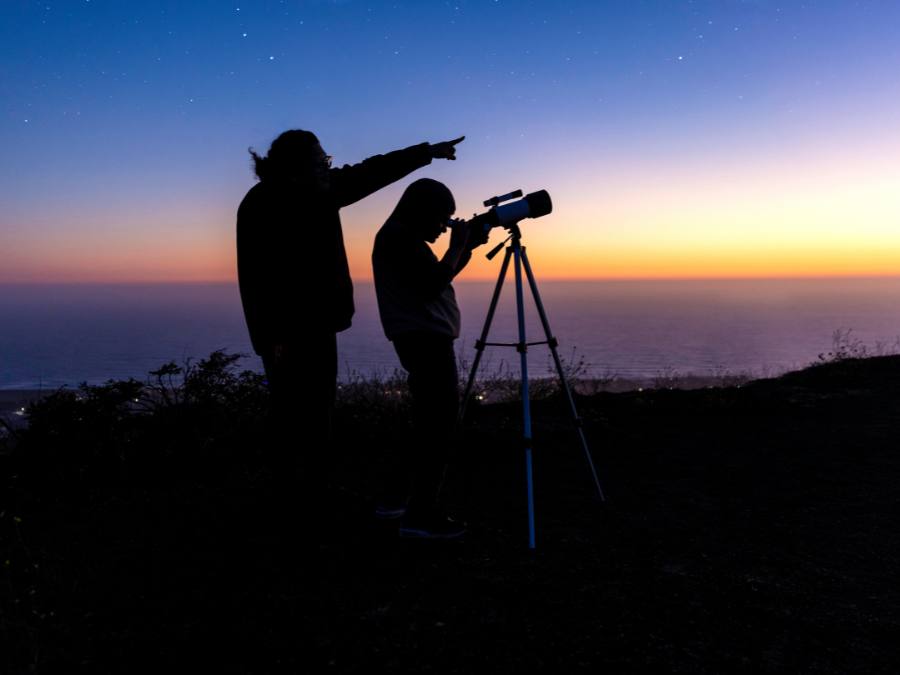
4. Photography
The park offers photographers endless inspiration, from glowing lava and jagged cliffs to misty rainforests and star-filled skies. Early mornings and evenings provide the best light.
5. Bird Watching
Spot unique species like the nēnē, Hawaii’s state bird, or the elusive Hawaiian honeycreeper. The park’s varied habitats make it a hotspot for bird enthusiasts.

Hiking, stargazing, or just soaking up the views? Teeholic’s Hawaii apparel fits every moment.
Practical Tips for Visiting Hawaii Volcanoes National Park
When to Visit
The park is open year-round, but the best time to visit is during the dry season, from April to October. Arriving early or late in the day helps you avoid crowds and enjoy cooler temperatures.
Entry Fees and Permits
As of now, the park charges $30 per vehicle for a 7-day pass. Annual passes are available for frequent visitors. Check the official website for the latest information on fees and permits.
What to Bring
Prepare for changing weather. Bring water, sunscreen, sturdy hiking shoes, and layers to stay comfortable. A flashlight is essential for exploring lava tubes or stargazing.
Park Rules and Safety
Respect the park’s fragile ecosystem by staying on trails and following all guidelines. Volcanic landscapes can be unpredictable, so always heed safety warnings and keep a safe distance from active lava flows.
Accessibility
The park strives to be inclusive, with accessible trails and visitor centers. Facilities like the Kīlauea Visitor Center offer resources for visitors with mobility concerns.
Nearby Attractions and Day Trips
Hilo Town
Located a short drive from the park, Hilo offers waterfalls, a charming farmers’ market, and local museums that provide a glimpse into Hawaiian culture.
Punaluu Black Sand Beach
This iconic beach is a must-see for its jet-black sand and the chance to spot Hawaiian green sea turtles basking on the shore.
Kona Coffee Farms
For coffee enthusiasts, a trip to the Kona region is a treat. Tour a coffee farm, sample local brews, and learn about the island’s coffee-making traditions.
Akaka Falls State Park
A little farther afield, Akaka Falls offers a scenic hike through lush rainforest to a 442-foot waterfall that will leave you in awe.
FAQs About Hawaii Volcanoes National Park
Can you see active lava flows?
Lava activity varies. Check the park’s official updates to find the best times and locations for safe viewing.
How long should I plan to spend in the park?
You can explore highlights in a day, but a full weekend allows time for hiking, stargazing, and cultural programs.
Is camping available inside the park?
Yes, the park offers campgrounds and backcountry camping permits for an immersive experience.
Conclusion
Hawaii Volcanoes National Park offers an unparalleled opportunity to witness nature’s power and beauty. Whether you’re hiking near Kīlauea or marveling at Halemaʻumaʻu Crater, every moment here is unforgettable. As you plan your visit, make sure you’re prepared with comfortable, stylish clothing. Teeholic’s American States Collection, featuring T-shirts, hoodies, and sweatshirts with bold designs, is a great way to stay cozy while embracing your adventurous spirit. Pack smart, explore freely, and create memories that will last a lifetime.


Leave a Reply